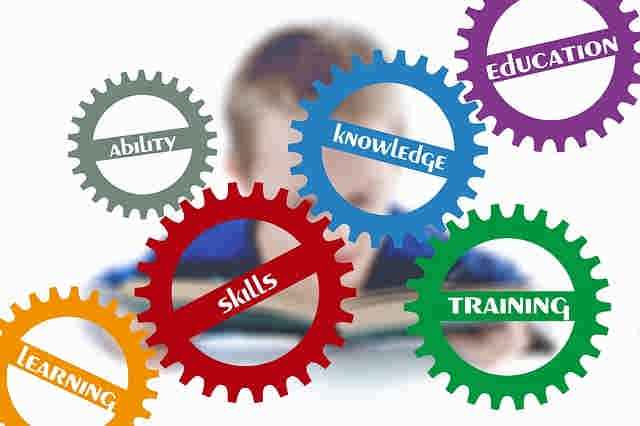We live in a fast-changing world where textbooks and theory alone no longer cut it. Employers are hungry for talent that can jump into real-world situations and solve problems, not just recite definitions. In classrooms, students often feel disconnected from the job market — they’re learning, yes, but they’re not doing. They’re reading about how things work but rarely getting the chance to see them in action.
This is where Duaction comes in. It’s more than just a buzzword. Duaction is a powerful approach to education that merges theory with practice. It’s a way of learning that ensures students don’t just know things — they can do things. In other words, it closes the gap between learning and working.
Duaction connects schools, industries, and individuals to create a learning system that’s hands-on, career-oriented, and future-proof. Whether you’re a student, a teacher, or a business owner — Duaction is something you’ll want to understand, because it’s changing the way we think about education, training, and talent development.
Let’s dive into why Duaction is becoming the perfect key to unlocking a new era of learning — one that actually works.
What is Duaction?
Simple Definition and Core Idea
At its core, Duaction combines two powerful concepts: dual education and action-based learning. It’s about pairing classroom learning (theory) with real-world application (practice). Instead of spending years studying before stepping into a job, students experience work life as part of their education.
So rather than learning about engineering, nursing, hospitality, or coding — students learn by doing it. They might spend part of their week in a classroom and the other part in a workplace. They study theories, then see those theories unfold in real scenarios. This rhythm of learning by doing isn’t just effective — it empowers their lives.
How It Started and Why It’s Different
The concept of dual education isn’t brand new. Countries like Germany and Switzerland have used versions of this model for decades with incredible success. In fact, Germany’s low youth unemployment rate is often credited to its strong dual education system.
But Duaction goes a step further by modernizing this model. It blends technology, soft skills, mentoring, industry involvement, and digital platforms into the mix, creating a holistic approach to learning. It’s not just apprenticeships rebranded. It’s a whole new way of looking at education and training — one that keeps evolving with industry needs.
What makes Duaction different is its balance. It’s not all work and no theory — nor is it the other way around. It’s an integrated system designed to equip students with both the knowledge and the know-how.
From Classroom to Career
Turning Theory into Practice
Let’s be honest — how many of us remember a theory from school that we never actually used?
Duaction changes that story. In a Duaction-based program, students aren’t just memorizing facts for exams. They’re applying concepts to real projects, solving actual challenges businesses face, and working side-by-side with professionals in the field.
For instance:
A student studying finance might split their week between accounting classes and working at a local bank.
A tech learner might study programming in class and then join a software development team to work on actual products.
A culinary student may learn about nutrition on Mondays and be in a hotel kitchen on Thursdays.
This back-and-forth rhythm reinforces learning, builds confidence, and most importantly, makes education relevant.
Success Stories Showing Real-Life Impact
Real lives are being changed through Duaction. Take the example of Sara, a 20-year-old student in healthcare. While her peers were still struggling to understand how a hospital operates, Sara was already rotating through patient care units thanks to a Duaction partnership with a medical institute. She graduated not only with a diploma but also with hands-on experience that landed her a job right after school.
Or consider Ahmed, who studied engineering. His Duaction journey included working at a manufacturing plant during his studies. Today, he’s managing a team at that same plant. He didn’t just study engineering — he lived it.
Stories like these are why Duaction isn’t just an idea — it’s a movement.
How Duaction Works
Key Features of the Model
Here’s how the Duaction system typically operates:
Dual Enrollment – Students are enrolled in both an educational institution and a partnered company.
Structured Curriculum – Courses are designed to alternate between theory and hands-on training.
Mentorship – Each student is assigned a mentor from the industry to guide and support them.
Skill Assessment – Regular assessments are done in both academic and practical settings.
Certification + Experience – At the end, learners walk away with formal qualifications and verified work experience.
The beauty is in the coordination. Institutions and industries work hand in hand to make sure what’s taught in class aligns with what’s happening in the real world.
Examples from Different Industries
IT & Software: Coding bootcamps and tech academies partner with startups to provide real-world projects during the learning period.
Automotive: Mechanical engineering students spend months in auto workshops, learning how engines work hands-on.
Fashion: Design students intern with fashion houses while still attending pattern-making and textile classes.
Construction: Trainees study building codes one day and assist on-site the next.
Marketing: Learners develop strategies in class, then execute digital campaigns for actual brands.
This isn’t limited to vocational trades. Even white-collar careers benefit from Duaction. It’s versatile — and that’s what makes it powerful.
Skills That Last a Lifetime
How Duaction Builds Strong, Practical Skills
It’s one thing to know how to do something. It’s another to do it with confidence.
Duaction isn’t about cramming. It’s about crafting lasting skills. Through continuous exposure to real-world environments, students develop more than just technical abilities. They build:
Problem-solving skills
Communication
Critical thinking
Time management
Adaptability
Teamwork
They learn how to navigate workplace dynamics, handle pressure, and take initiative — things no textbook can truly teach.
The Role of Mentors and Hands-On Learning
Mentors are a cornerstone of the Duaction model. They’re not just supervisors — they’re coaches, role models, and motivators.
A mentor can help a student turn a mistake into a valuable lesson. They bridge the emotional and professional gap that often exists in early careers. Through hands-on guidance, they create a space where students can grow, fail safely, and improve.
This mentor-led, hands-on environment turns students into professionals — not just graduates.
Why Employers Love It
Solving the Skill Gap Problem
Businesses around the world are struggling with a huge problem: the skills gap. They have roles to fill but can’t find candidates with the right abilities. Traditional education is too slow to adapt to rapidly changing job requirements.
Duaction fixes this by creating a pipeline of job-ready talent. Students who go through Duaction programs don’t need months of training after hiring — they’re already trained.
This reduces:
Onboarding time
Training costs
Turnover rates
And increases:
Productivity
Job satisfaction
Employee loyalty
How Duaction Helps Companies Find Better Talent
Through Duaction partnerships, companies can spot talent early. They get to work with students during training, evaluate their performance, and offer jobs before graduation.
It’s a win-win:
Students secure future employment.
Employers get workers who already understand the company culture and operations.
Some companies even design their own Duaction curricula in partnership with institutions to ensure perfect alignment.
Challenges to Watch
What Holds Duaction Back
While the model is powerful, it’s not without its challenges.
Lack of Awareness – Many people, especially in developing countries, have never heard of Duaction.
Rigid Educational Systems – Some institutions are slow to change or reluctant to collaborate with industries.
Limited Industry Participation – Not every company is willing to invest time and resources into training students.
Funding and Logistics – It takes careful planning and coordination to set up a smooth Duaction program.
What Needs to Change for It to Grow
For Duaction to reach its full potential, we need:
Policy support from governments
Incentives for companies to participate
Training for educators to align theory with practice
Investment in platforms that facilitate partnerships between schools and businesses
Once these pieces fall into place, Duaction could become the gold standard in education.
The Future with Duaction
Blending Tech, Education, and Experience
Technology will play a huge role in expanding Duaction’s reach. Imagine:
Virtual internships
AI-assisted learning
Online mentor platforms
Augmented reality simulations
Even students in remote areas can participate in high-quality, hands-on learning through digital innovation.
Global Momentum and What’s Next
Countries around the world are waking up to the value of Duaction. As more success stories emerge, we’re likely to see:
Stronger global networks
Cross-border internship programs
International certifications
Scalable models for under-resourced regions
This is more than a trend. It’s a global shift in how we prepare people for life and work.
Conclusion
Duaction is not just another education model. It’s a revolution. It breaks down the walls between school and work, between theory and application, between knowing and doing. It gives students a purpose, gives employers the skills they need, and gives society a smarter way to grow.
If we want education to be meaningful, if we want people to thrive, and if we want industries to evolve — Duaction is the key.
Whether you’re a student looking to build a future, an educator seeking better results, or a business leader hungry for top talent — now is the time to understand and embrace Duaction.
Let’s stop talking about the gap between theory and practice. Let’s bridge it — with Duaction.



